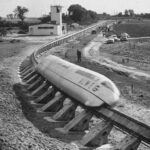Modern civil engineering is a broad field that encapsulates the design, construction, and maintenance of the physical and naturally built environment, including works like roads, bridges, canals, dams, and buildings. Among the myriad considerations that go into these projects, the integration of Heating, Ventilation, and Air Conditioning (HVAC) systems plays a crucial role in the sustainability and functionality of modern structures.
Notably, the emphasis on energy efficiency and the comfort of building occupants has never been more pronounced today. For those looking to deepen their understanding of these systems, HVAC education provides a foundational pillar in building a knowledgeable background in HVAC installations within civil projects.

HVAC and Civil Engineering: A symbiotic relationship
Adopting Heating, Ventilation, and Air conditioning (HVAC) systems in conceptualizing and implementing construction projects is a major interdisciplinary collaboration in civil engineering. Efficient HVAC systems are essential in air quality control, provision of thermal comfort, and energy usage management in the buildings. In essence, the civil engineer has become a one-man team responsible for designing and implementing the HVAC system, requiring a more comprehensive skill set and a more holistic approach to building design.
Civil construction engineers are primarily focused on issues related to the structures’ stability, security, and operation. Nowadays, the modern role of these professionals has expanded to include not only the construction of these structures but also the planning of how these structures will be livable and sustainable. This expanded role includes choosing the HVAC systems that are suitable for the design and functionality of the building. For instance, how HVAC systems are chosen can affect the structural design of the building, such as load-bearing walls and space distribution.
Moreover, the same concern for system integration should be considered from the beginning of the engineering process to achieve the necessary harmony between the mechanics and the architectural concept. This integration changes everything from ductwork routing to the location of vents and thermostats, which must be in harmony with the building’s design to achieve aesthetic and functional goals.
Current Trends in HVAC and Civil Engineering
Technology has recently been incorporated into construction projects, such as how HVAC (Heating, Ventilation, and Air Conditioning) systems are applied. For example, Building Information Modeling (BIM) software enables civil engineers and HVAC experts to work together more efficiently. BIM provides a digital model of the building, which is represented by its physical and functional characteristics. So, it helps to make better decisions that cater to structural and HVAC needs.
In addition, civil engineering engineers are developing HVAC solutions that are more sustainable and less energy-consuming. Examples include geothermal heating and cooling systems that use the earth as a heat source in winter and a heat sink in summer and solar-powered HVAC systems that use solar panels to convert sunlight into electricity to power air conditioners and heaters.
They are as environmentally friendly as they are economical, a fact that has led to their wide popularity in modern construction projects. Therefore, civil engineers must keep up to date with the latest innovations and understand how these are incorporated into building designs so as to lead innovative and sustainable projects.
Conclusion
The part that the HVAC systems play in modern civil engineering is overwhelming. The shift towards sustainable and energy-efficient buildings necessitates incorporating these systems into the construction process, making it ever more complicated and indispensable. The HVAC domain in civil engineering is essential to comprehend deeply.
Like Us on Facebook!
A deep understanding of the HVAC system through comprehensive education and training is a must to master these competencies and ensure that engineers are well-prepared to deal with the challenges of modern civil engineering. With the rapid advancement of the field, the collaboration between civil engineering and HVAC expertise will become more significant. This demonstrates the need for integrated educational pathways between these disciplines.















